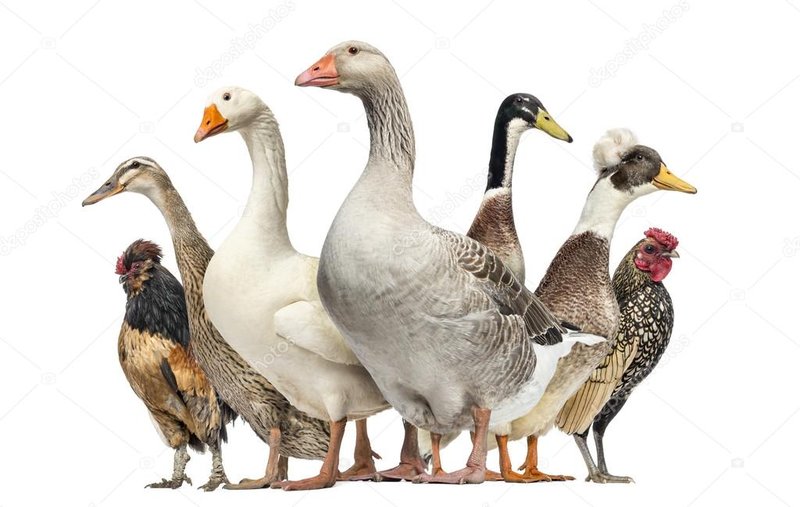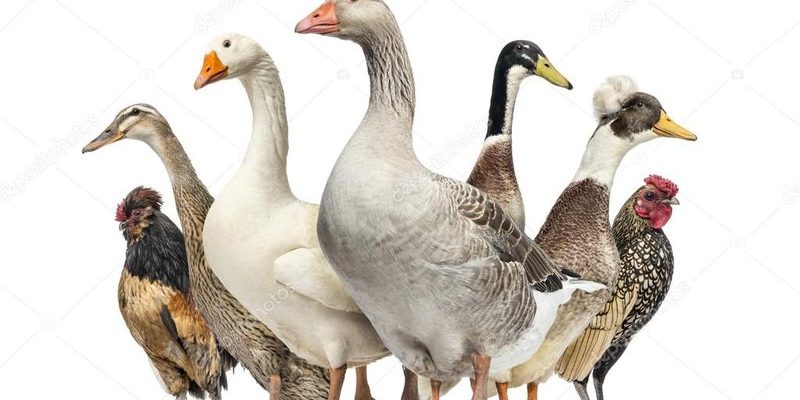
Ducks, chickens, and geese are all part of the waterfowl and poultry world, but they have unique quirks and social behaviors. This means that placing them together without a little forethought could lead to some squawking drama. Let’s take a closer look at whether these birds can coexist without turning your backyard into a scene from a wildlife documentary.
Understanding the Personalities of Geese, Ducks, and Chickens
Geese are known for their strong personalities. They tend to be protective and can get pretty territorial, especially when they have goslings. Ducks, on the other hand, are usually more laid-back, enjoying their swim time and dabbling for food. Chickens? Well, they can be a bit of a mixed bag. Some are feisty, while others prefer to stay out of trouble.
Here’s the thing: when you mix these birds, you’ll see some thrilling dynamics and potential conflicts. Ducks often stay low to the ground, while chickens might venture a bit further. Geese, with their size and assertiveness, can make it tricky for other birds to feel safe.
You might be wondering if this means they can’t be kept together. The answer is: it depends. It depends on individual bird temperaments, the space you provide, and how you introduce them to one another.
Space Matters: Creating a Safe Environment
One of the first things to consider is how much space you have. Just like humans, your flock needs room to move and establish their territory. In an ideal setup, geese, ducks, and chickens should each have designated areas to roam. This helps minimize conflicts and establishes a sense of safety.
If you have a large backyard or farm, think about creating separate zones. Here’s a simple way to visualize it:
- Geese Area: A spacious pen where they can graze and swim.
- Ducks Area: A pond or kiddie pool for dabbling and cooling off.
- Chickens Area: A cozy coop with plenty of perches and dust-bathing spots.
By giving them distinct spaces, you can help reduce stress. When introducing them, you might want to supervise their interactions at first. Gradually allowing them time together can help ease tensions.
Introducing Geese to Ducks and Chickens
Introducing new birds can feel like planning a blind date. It’s all about setting the right mood and ensuring everyone feels comfortable. Start by letting your geese and other birds see each other from a distance without direct contact. This can be done using fencing or gates.
After a week, try some supervised visits. It’s essential to keep an eye on their behavior. Look for signs of aggression or stress. Geese can be quite vocal, and you might hear honks that sound like heated debates. If things seem too intense, it might be best to separate them again and try another day.
Over time, many owners find that their geese and ducks can coexist peacefully. But chickens might need more cautious introductions since they can be more timid. Always be prepared to step in if things get too rowdy.
Feeding: Different Diets, Same Table?
Feeding your flock can pose another challenge when housing geese, ducks, and chickens together. While all three enjoy grains and greens, their diets can differ in specific nutritional needs. Geese require more protein compared to the typical chicken or duck, and they also munch on grass.
So, how do you ensure everyone gets what they need? You might want to consider feeding them separately or providing a mixed feed that meets the requirements of each bird. You can provide a blend of grains and greens that’s suitable for all, but be mindful of portion sizes.
Take note of what each bird prefers; you might find that while ducks dive into what you offer, geese may be a bit more discerning. And chickens? They can be the fussier eaters of the bunch, often picking at their food while checking out what everyone else is doing.
Understanding Behavior and Communication
Birds communicate in fascinating ways. Geese are very vocal and use honking to express their feelings. Ducks quack, while chickens often cluck and chirp. Understanding their sounds can help you gauge how they’re feeling.
When introducing them, pay attention to their vocalizations. If the geese are honking loudly, they might feel threatened or annoyed. Conversely, if they’re calmly grazing or swimming, they’re likely at ease.
You’ll want to encourage positive interactions, reinforcing good behavior with treats or praise. This helps them associate each other with positive experiences.
Common Challenges: What to Avoid
While blending these critters can work, it’s not without its potential pitfalls. One common issue is bullying. Geese, being larger, may assert dominance over smaller birds, particularly chickens. Keeping an eye out for aggressive behaviors is crucial.
Another challenge arises during breeding season, particularly with geese. When they have babies, they can become fiercely protective. If this occurs while other birds are around, tensions can escalate quickly.
To prevent such issues, introduce your birds during a neutral time, such as outside of breeding seasons. If you see consistent aggression or fear, it may be best to keep them separate.
So, can geese live with ducks or chickens? The answer is a resounding maybe! It takes careful consideration, proper introductions, and a bit of patience. With attention to their individual needs and behaviors, you can create a peaceful coexistence that benefits everyone.
If you’re thinking about expanding your flock, be prepared for a little trial and error. Remember, it’s all about establishing a safe environment where each bird can thrive. With time, you may find your backyard blossoming with the beautiful sounds of a harmonious feathered family.

